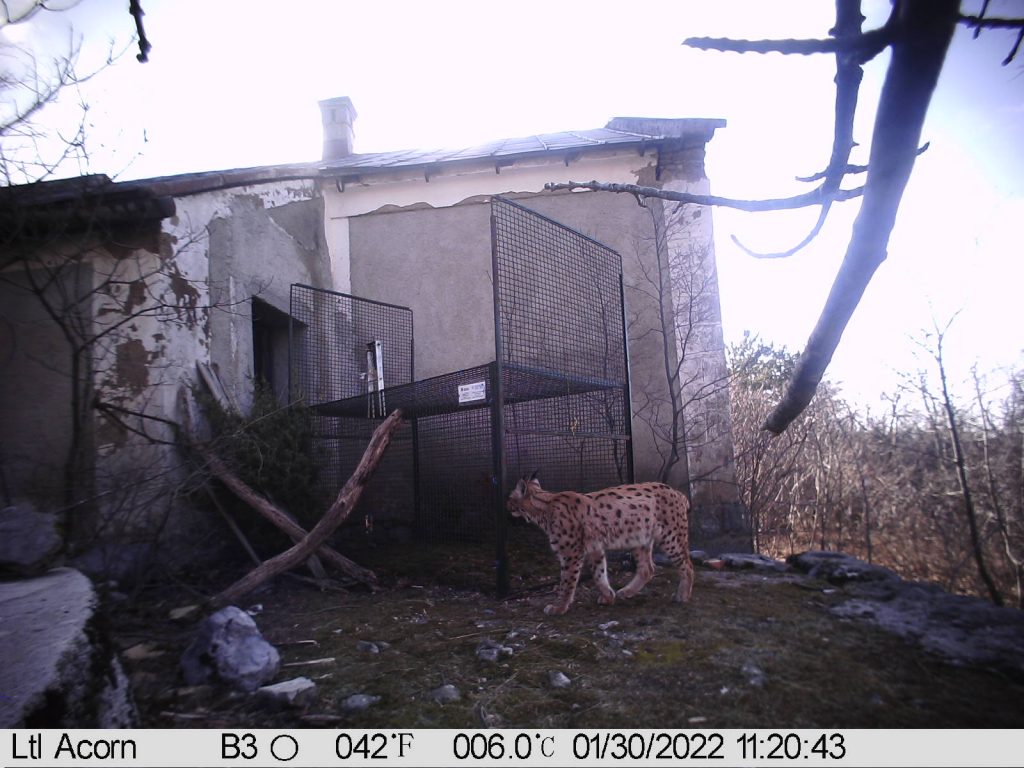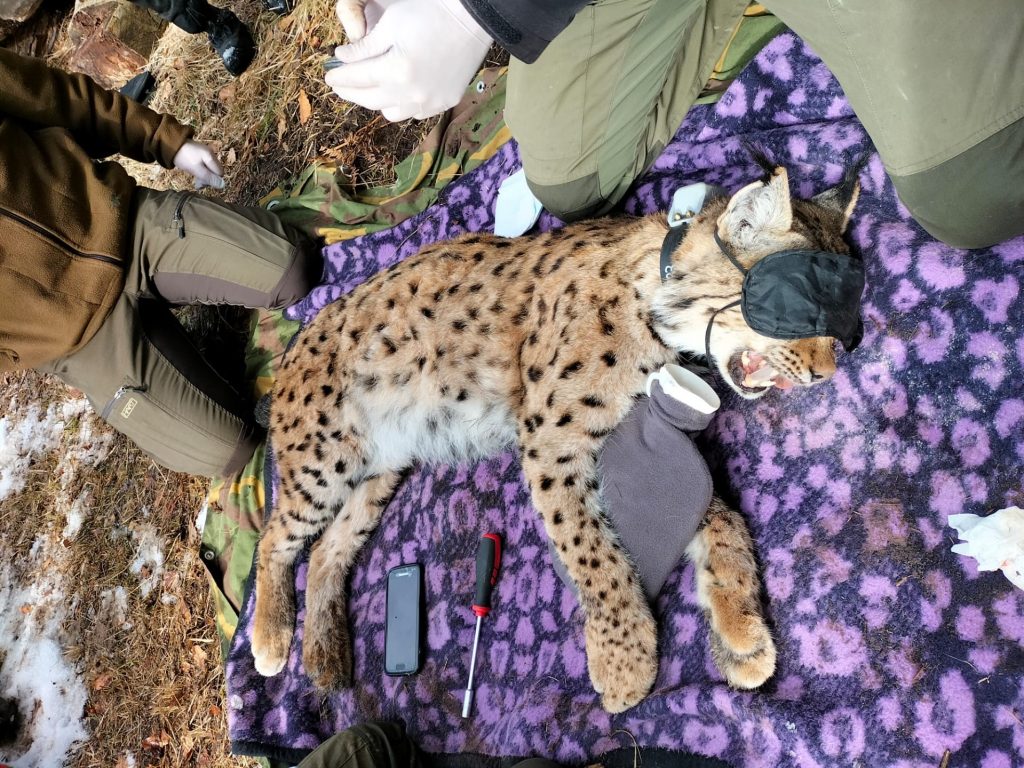On February 4, 2022, LIFE Lynx project managed to capture not one, but two lynxes from the remnant population in Dinaric Mountains. In Nature Nark Velebit, Croatian team captured an adult male named Josip. He is a big male who weighed 27 kg and we estimate him to be around 5 years old. He is present on our camera traps in the Nature Park since December 2019, and now we will gain a better insight into his life with the help of the telemetry collar. Acquired data will also help us improve the monitoring of the lynx population in the area of the Nature Park Velebit.

Lynx Josip moments before the capture. Photo: LIFE Lynx
On the same day, near the cliffs around Kolpa river, Slovenian team captured an adult male, who was named him Klif (means cliff in Slovenian). He weighed 24 kg and we estimated him to be 5-6 years old.

Lynx Klif during sedation. Photo: Teresa Oliveira
We already know Klif for several years through camera trapping and snow tracking. Center of his territory are cliffs around Kolpa River and Goteniška Gora, but we have recorded him also on Travna Gora and on Stojna, his territory might also cross the border to Croatia. We were particularly interested in this male, because he shares territory with collared female lynx Petra and he is most likely father of her kittens; including Bor, whom we collared last month and who has in the meantime already dispersed around 40 km away and is currently in Kočevski Rog.
Capture and sedation was led by the project team from Department of Forestry from Biotechnical faculty and ZOO Ljubljana, in assistance by the local hunters, Slovenia Forest Service and wildlife researcher from Italy. During sedation veterinarian noted mild heart problems (heart murmur and arrhythmia), which are unfortunately not unknown in this severely inbred population and could be the main reason for population decline in the last decades. Nevertheless, Klif appears to be in good condition and has recovered from sedation. New collar will provide us with valuable data on lynx movements and reproduction in this part of the project area, as well as interactions with translocated lynx from the Carpathians.
